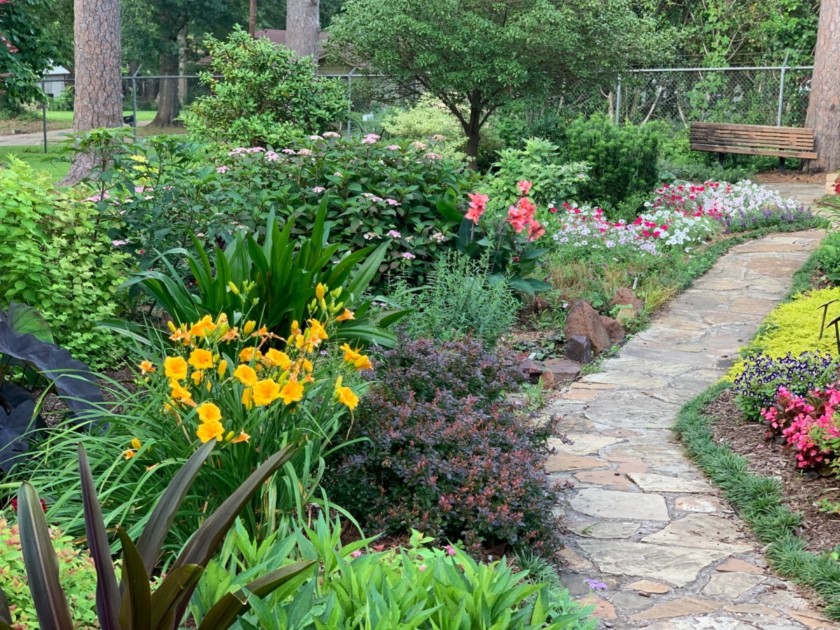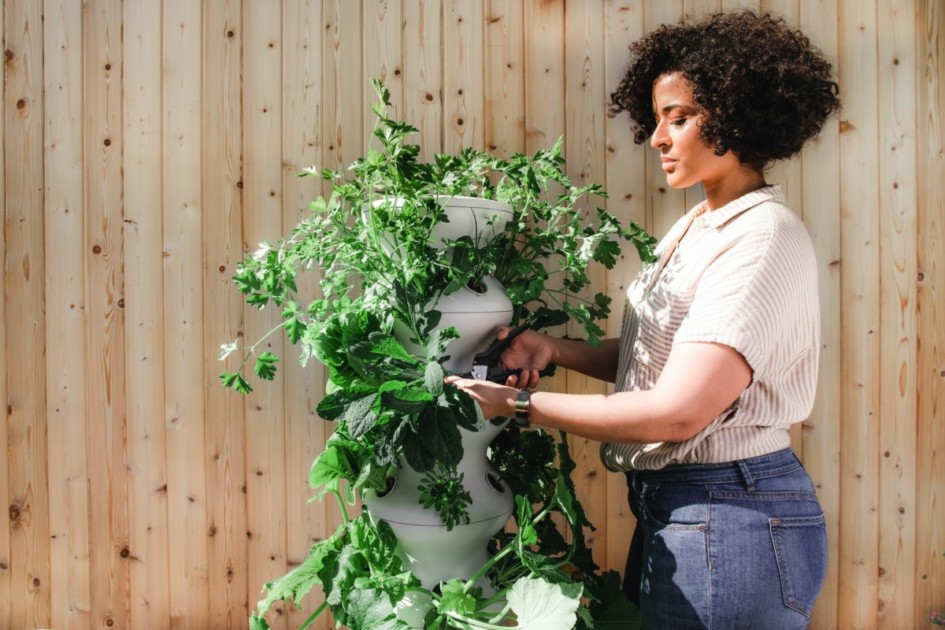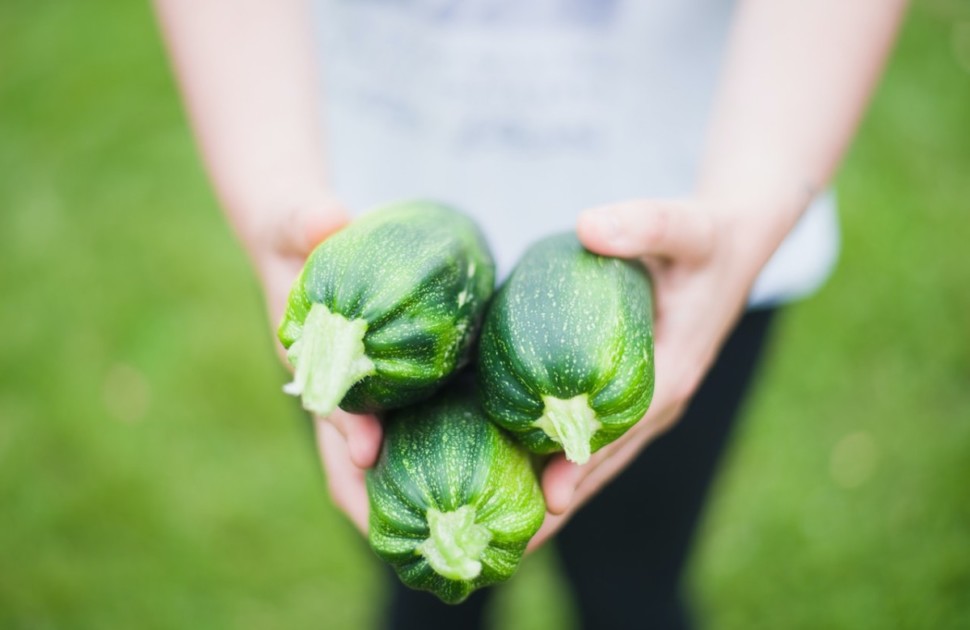Spring is officially here, which means we can finally use all our pent-up energy from winter to step back into the garden. Whether you live in San Diego, CA, and prefer a beautiful flower garden in your backyard, or live in New York, NY and enjoy an edible garden to grow your own herbs, tomatoes, zucchini, tomatoes, and cucumbers, there’s always room to grow. So what are the best spring gardening tips for 2022? We unearthed some tips and ideas straight from the experts that you’ll see sprouting up this year that are perfect for your home.

Spring Gardening Checklist for 2022:
First, take time to tidy up
A spring garden tidy-up is all about looking forward and doing the hard work upfront. It makes the upcoming maintenance easier and allows for more time to enjoy the garden in the warmer months. Get ahead by dealing with any emerging weeds before they become large and unsightly. If you’re left with any areas of bare soil after weeding, consider planting to fill the space. With any leftover space, try mulching with a thick layer of bark or organic compost to suppress weed regrowth. This gives a neat and tidy finish. – Michael Seatory, My Tidy Garden
Create a natural privacy wall
Vertical gardens are not only good for growing your own herbs and veggies at home, but they can also be fantastic design elements for your outdoor space. One of my favorite ways to utilize a vertical garden is as a natural screen to create privacy, a perfect play for small urban balconies. Try using them to section off smaller areas of a larger outdoor area, creating cozy niches or “rooms” in your outdoor living area. – The Heathered Nest
Upgrade your irrigation
This year, customers are interested in proper irrigation. Smart controllers continue to be the preferred choice of many of our customers, with WiFi controllers leading the list. We are installing several Hunter Industries Hydrawise WiFi controllers now with lots of smart options that help save water. We can monitor these controllers from our offices, receive notifications if there are wiring/solenoid faults, and even let us know if there is a broken pipe if a flow meter is installed. Finally, these controllers allow us to fine-tune watering schedules based on their specific microclimate. – John Mueller of Mueller Landscaping
Make the most out of your yard by going vertical
Vertical gardening allows you to grow more in less space, promotes healthy plant growth, and makes vegetable harvesting much easier. This gardening technique can be used in any type of garden – raised beds, containers, or in-ground gardens. There are a variety of trellises that can be purchased, or you can get creative and make your own out of wire fencing or more natural materials like bamboo. If you are looking for a list of vegetables that are great for vertical gardening, read my blog post. There are also a variety of vining flowers that grow vertically, including sweet pea, clematis, black-eyed Susan vine, moonflower, nasturtium, passionflower, and more. – Sowing in Suburbia

Be sure to prep your soil
When it comes to spring and summer gardening, many people want to get their lawns looking healthy and green. The secret to achieving a perfect lawn is simple: Prepare your soil and feed the beneficial microbes so that when the heat of summer hits, your plants, lawns, and gardens are hearty, healthy, and resilient. Lawn and garden health starts with soil health – you need to improve the soil structure and its water-holding capacity while also ensuring fertilizers can penetrate the soil and deliver the essential nutrients needed for health and growth. The key is conditioning and preparing your soil several weeks earlier, or even maintaining this all year round. This way, your gardens, and lawns can cope better with rain, drought, and of course, soaring temperatures during summer. – Plant Doctor
Consider planting blue butterfly peas
Springtime is here, which means fresh berries, fruit, and pretty flowers to make delicious drinks. Blue butterfly peas are very popular, although seeds are often hard to come by. Blue butterfly peas bring beauty to your garden and produce beautiful blue flowers that make a tasty, colorful drink when you add a splash of lemon juice. If you want a colorful fruit salad, toss in a few flowers. – Princess, owner of Backyard Garden Seeds
Create a garden on your balcony or patio
Apartment balcony or patio gardening is a great way to add joy and life to your space. Many people fear setting up a garden, but it’s actually easier than they think. With a little know-how, you can create a beautiful balcony garden and enjoy a variety of plants and flowers. Here are six steps to consider before starting your own balcony garden:
- Learn the light of your balcony or patio space.
- Decide on a plan that fits your space.
- Shop for plants or seeds (herbs, leafy greens, and bush vegetables are great for beginners).
- Choose the right size of planters, pots, and hanging baskets for the plants.
- Choose a lightweight, soilless potting mix that retains moisture and drains well
- Water consistently, feed fertilizers, and perform small little maintenance to keep plants alive and happy.
Growing our own garden makes us happier and healthier. – Divya from “The Prab Family”

Dedicate a wall to vertical gardening
Growing fresh fruits in your own backyard saves on transportation costs and cuts down on pollution. With climate change and rising populations, vertical farming and gardening is a viable solution. With the right lighting and ventilation, people can dedicate a wall in their home for vertical gardening, with access to fresh herbs, fruits, and vegetables year-round. – Lorna Hamel, North Country Life
Match your trellis with your vine
To make a beautiful vertical garden, you need a support or trellis for the vines to grow on. Matching the right plant to the right support is important. For vines that wrap or twine around a structure as they climb, such as wisteria and honeysuckle vine, use thick poles, sturdy wire, or a strong arbor for them to climb. For vines that climb by tendrils, such as sweet peas and grapes, use a chain-link fence or poles and wires that are less than 3/4 inch in diameter so they can attach easily to them. For vines with holdfasts or fasteners, such as climbing hydrangea and boston ivy, provide a smooth, solid surface such as a brick or stone wall, rot-resistant wood siding, or an old stump to climb. – Gardening with Charlie
Use a pocket planter kit
Vertical gardens don’t necessarily require a lot of time or work to install. In fact, pocket planter kits make it easy to create your own living wall without a complicated build. Simply hang the pocket panel on a wall or fence and fill it with soil and plants. You can also build a simple wood frame to give your garden a finished look. – Easy Vertical Gardening


 United States
United States Canada
Canada